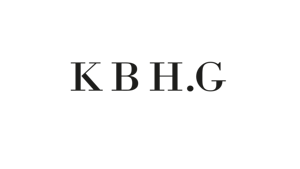Contemporary Myths from the Arabian Gulf
May 12–July 16, 2023
Spitalstrasse 18
4056 Basel
Switzerland
Hours: Wednesday–Monday 11am–6pm
info@kbhg.ch
Evaporating Suns: Contemporary Myths from the Arabian Gulf will be the first institutional exhibition in Switzerland to explore contemporary art from the Gulf Region. The Kulturstiftung Basel H. Geiger | KBH.G will bring together the work of some of the region’s newest and most promising multidisciplinary artists. Ten female artists and three male artists from Abu Dhabi (UAE), Dubai (UAE), Sharjah (UAE), Manama (Bahrain) and Riyadh (Saudi Arabia), who have been confronted with the fastest social and economic growth over the past 30 years, engage with the culture’s rooted local myths and folkloristic beliefs.
The Arab civilization has some of the most diverse and colorful stories and legends in the world, with many of the stories being passed down orally from generation to generation over thousands of years. While some of these are known to be pure myths and have taken the role of the common fairy tales among Arabs, many others still hold a hint that they actually did take place. The Arabian Gulf’s perspective on myth has shifted dramatically from its pre- to its post-oil era. Where in the former, myths were attributed to religion and the social behaviors sanctioned by them, in the latter, myth has been restructured to create an artificial national identity.
Curated by Munira Al Sayegh, founder of Dirwaza Curatorial Lab, Abu Dhabi in collaboration with Austrian curator Verena Formanek, Evaporating Suns will look at the breadth of inherited myths from the Arabian Gulf, their preservation over generations and their purpose into the contemporary realm.
The thirteen artists whose works are presented in the exhibition are Farah Al Qasimi, Mashael Alsaie, Alaa Edris, Bu Yousef, Abdullah AlOthman, Moza Al Matrooshi, Maitha Abdalla, Saif Mhaisen, Fatima Uzdenova, Asma Belhamar, Mays Albaik, Fatema Al Fardan, and Zuhoor Al Sayegh. All the works on show have been especially created for this exhibition except the first feature-length film by Farah Al Qasimi, which will be shown in Switzerland for the very first time. Using the Arabian Sea as a metaphoric image that encapsulates both ancient tales, dreams and history, the exhibition will stress how local myths and reality are intertwined and yet disparate.
The artworks presented in the exhibition draw out the opposition and analogy found within the framework connecting myth and fact. Mythical images, natural elements and historical references are confronted with environmental realities, social issues, changing landscapes, cultural differences and customs, political powers and religious beliefs.
The local, natural, and built environment
The Arabian Sea defines the geographical boundaries of the Arabian Gulf and similarly points to and carries various cultural nuances that are shared across the peninsula. These interactions spark dialogues that initiate myth which underline its social and historical relevance. These geographical boundaries also define the exhibition’s premise, which visually explores the nature of oral history, a widely practiced form of historicization found within the region.
Social arrangements and structures
The fast-paced environment and disconnection from traditional myths and histories have been addressed and articulated in the shape of artistic discourse, with the term “Gulf Futurism” coined by the artists Sophia Al-Maria and Fatima Al Qadri to describe the economic boom since the nineteen-seventies, which they describe as a “deranged optimism about the sustainability of both oil reserves and late capitalism.”
Perspective negotiations
Despite the strong reference to local traditions, the exhibition remains free of stereotypes and Western-influenced orientalism. Cultural institutions in the Arabian Gulf have developed new structures, which reject cultural imports and consciously focus on the development of their own artistic identity.
The exhibition is open daily, except Tuesdays, from 11am to 6pm, admission is free.
A catalog in German, English and Arabic, published in collaboration with Hatje Cantz, will be available.


